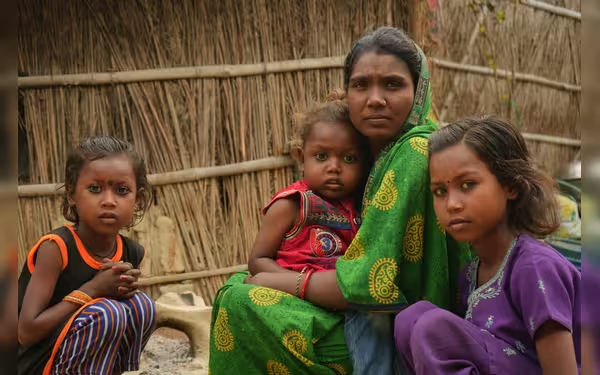Sunday, July 7, 2024 11:41 AM
Chaudhry Waqar Anwar's Encounter with Climate-Driven Snakebites
- Climate change shifts snake habitats closer to human settlements
- South Asia faces increasing snakebite incidents due to climate change
- Lack of antivenom in impoverished areas exacerbates snakebite impact
 Image Credits: Himal Southasian
Image Credits: Himal SouthasianClimate change-induced habitat shifts bring venomous snakes closer to human settlements in South Asia, leading to a surge in snakebite incidents. Lack of antivenom and healthcare challenges exacerbate the impact, highlighting the urgent need for community awareness and proactive measures.
Climate change is having a profound impact on communities in countries like Pakistan, India, Nepal, and Sri Lanka, leading to an increase in snakebites and fatalities from envenomation. The changing climate is causing shifts in snake habitats, bringing these dangerous creatures closer to human settlements.
In Punjabi culture, avoiding a snakebite is known as 'kakh lagna', symbolizing a narrow escape from danger. Farmers like Chaudhry Waqar Anwar from Gujranwala, Pakistan, have experienced firsthand encounters with snakes in their fields due to these climate-induced changes.
Snakebite incidents are becoming more frequent in South Asia, with extreme weather patterns linked to climate change playing a significant role. The conversion of natural habitats into agricultural lands has led to increased interactions between humans and snakes, resulting in more deadly encounters. Venomous snake species like king cobras, cobras, Russell's vipers, saw-scaled vipers, and common kraits pose a serious threat to communities in the region.
The lack of access to antivenom in impoverished areas worsens the impact of snakebites, with the World Health Organization identifying South Asia as a hotspot for snakebite-related deaths. Countries such as India, Pakistan, Bangladesh, Sri Lanka, and Nepal report thousands of snakebite cases annually, with a notable number ending in fatalities.
Official data on snakebite cases in Pakistan is limited, but estimates suggest a significant number of incidents occur each year, particularly severe envenomation cases. Inadequate healthcare facilities and reliance on traditional remedies contribute to underreporting and increase the risk of fatalities.
Countries like Bangladesh, Sri Lanka, and Nepal also struggle to accurately document snakebite cases, leading to discrepancies between official reports and actual incidences. The impact of climate change, including temperature fluctuations and habitat loss, is pushing snakes closer to human habitats, resulting in a surge of snakebite incidents.
While the exact influence of climate change on snakebites is challenging to measure, experts stress the importance of taking proactive measures to address this escalating public health concern.
As climate change continues to affect our environment, the rise in snakebites in South Asia serves as a stark reminder of the interconnectedness between human activities and wildlife. It is crucial for communities and governments to work together to implement strategies that mitigate the risks posed by venomous snakes and ensure access to timely medical interventions. By raising awareness, improving healthcare infrastructure, and promoting coexistence with nature, we can strive towards a safer future for all.













